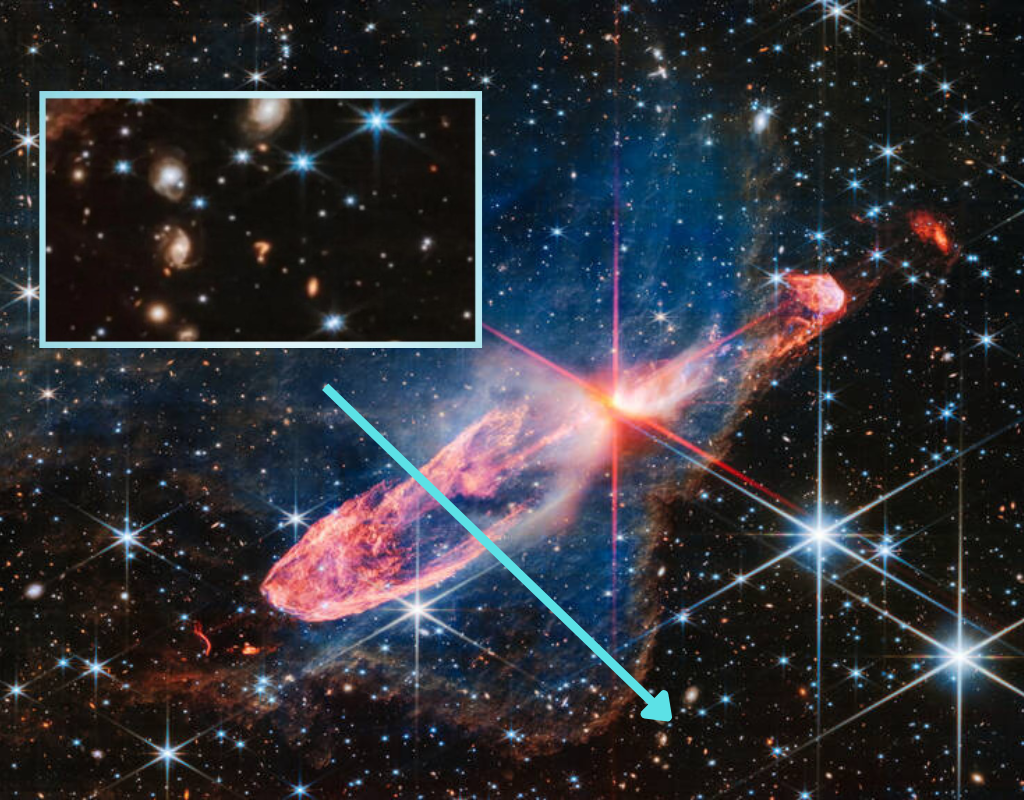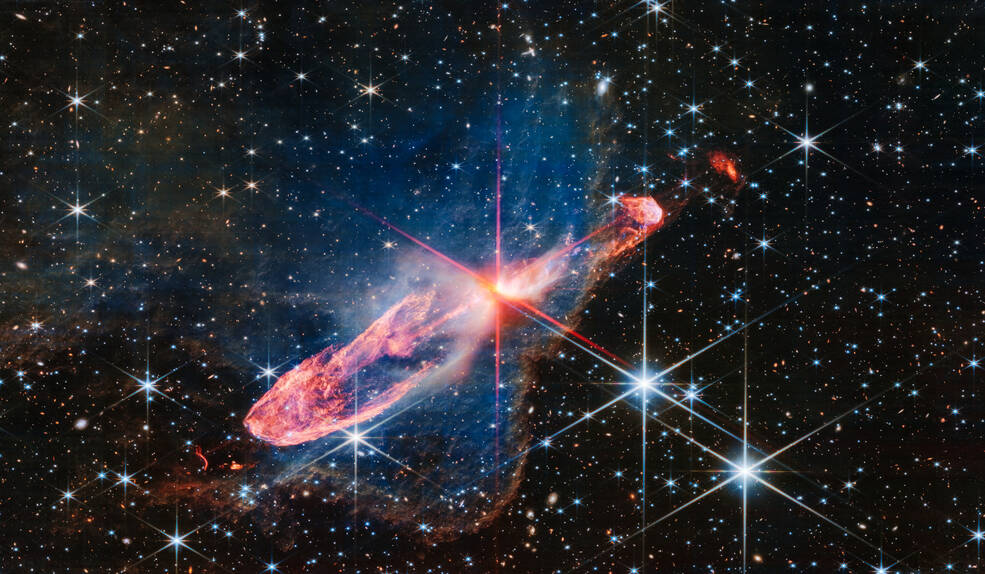The James Webb Space Telescope continues to unravel questions about our universe and beyond, but one of its latest discoveries is, quite literally, a question mark.

Late last month, the James Webb Space Telescope (JWST) team at the European Space Agency (ESA) released an image offering a detailed look at two actively forming young stars.
And while the deep-space picture is stunning, it’s a giant cosmic question mark that appears in the background that has everyone, ahem, asking questions.
Is it aliens trying to tell us something? Is it the cosmos throwing questions back in our face? Is it The Riddler? What could possibly cause such a stylized piece of punctuation to appear on camera?
Well, according to the Space Telescope Science Institute (STScI) in Baltimore, which is responsible for JWST’s operations, the most likely explanation is that the question mark is actually a remote galaxy or pair of galaxies getting tangled in each other’s gravitational pull.
“It is probably a distant galaxy, or potentially interacting galaxies (their interactions may have caused the distorted question mark-shape),” representatives of STScI told Space.com.

Get daily National news
“This may be the first time we’ve seen this particular object,” STScI added. “Additional follow-up would be required to figure out what it is with any certainty. Webb is showing us many new, distant galaxies — so there’s a lot of new science to be done!”
The astronomers point to the colour of the question mark as being one of the biggest clues — the red hue suggests that the object is quite distant and resembles other deep-space galaxies picked up in the last year by JWST’s cameras.
“The two distinct features could easily be merging galaxies in the background, with the upper part of the question mark being part of a larger galaxy getting tidally disrupted,” Matt Caplan, an assistant professor of physics at Illinois State University told Space.com.
“Given the colour of some of the other background galaxies, this doesn’t seem like the worst explanation. Despite how chaotic mergers are, double lobed objects with curvy tails extending away from them are very typical.”
And while the appearance of a celestial question mark is super exciting and rare, let’s take a moment to marvel at the larger photo in which the punctuation mark was spotted.

Two actively forming young stars located in the Vela Constellation — about 1,470 light-years away from Earth — and known as Herbig-Haro 46/47, were first discovered in 1977 and have been a popular pair for astronomers to study since.
According to NASA, the two stars began to form just a few thousand years ago — mere babies when it comes to the cosmos — and are still in the process of ingesting space material.
The “rambunctious” young stars are quite hungry, explains NASA, meaning they sometimes gather too much material and some of it gets ejected, resulting in the long lobes of gas and dust stretching away from the stars in the image.
“Over millions of years, the stars in Herbig-Haro 46/47 will fully form — clearing the scene of these fantastic, multihued ejections, allowing the binary stars to take center stage against a galaxy-filled background,” the agency wrote in a blog post.









Comments